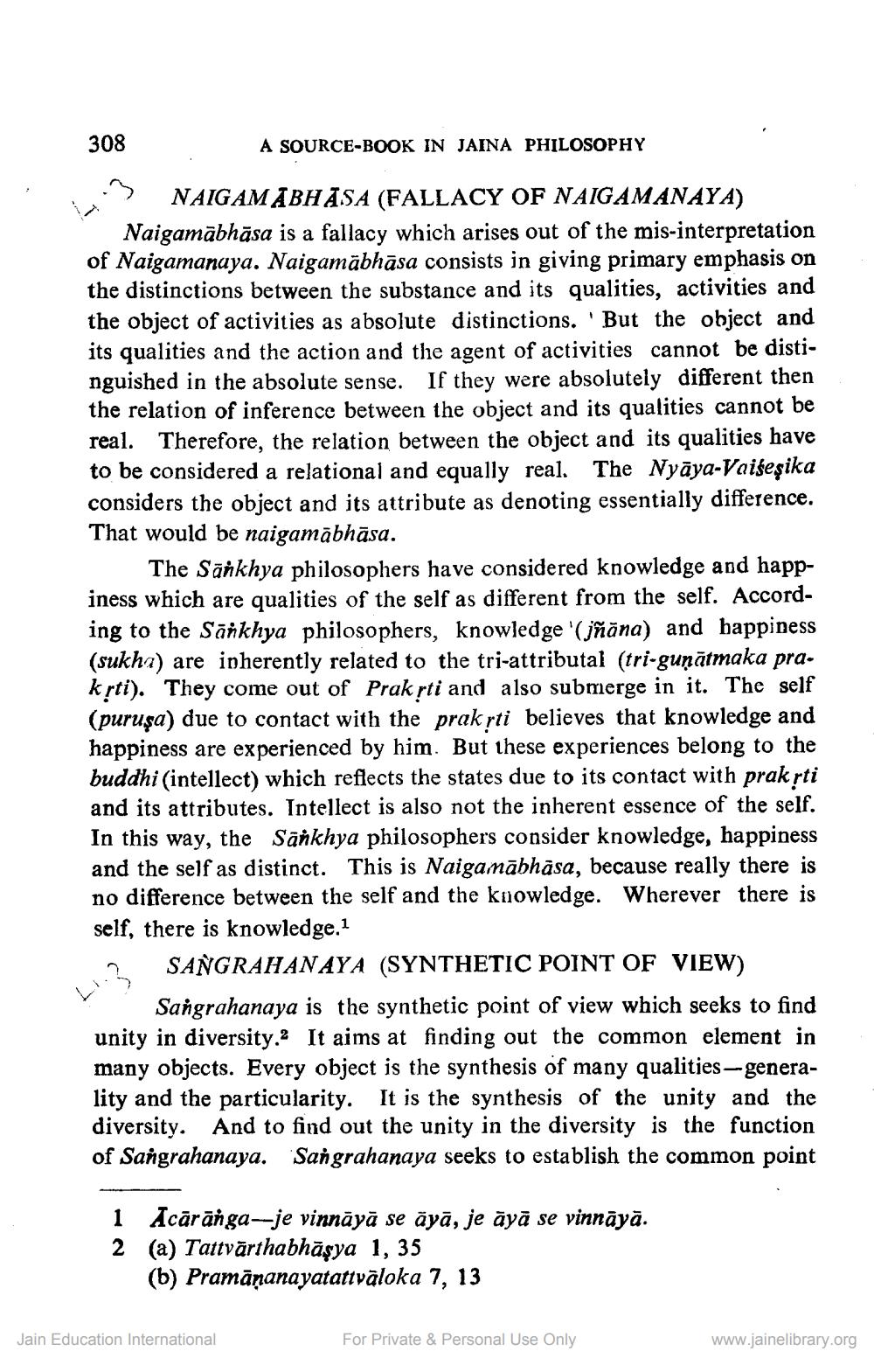________________
308
A SOURCE-BOOK IN JAINA PHILOSOPHY
S NAIGAMABHASA (FALLACY OF NAIGAMANAYA)
Naigamābhāsa is a fallacy which arises out of the mis-interpretation of Naigamanaya. Naigamābhāsa consists in giving primary emphasis on the distinctions between the substance and its qualities, activities and the object of activities as absolute distinctions. 'But the object and its qualities and the action and the agent of activities cannot be distinguished in the absolute sense. If they were absolutely different then the relation of inference between the object and its qualities cannot be real. Therefore, the relation between the object and its qualities have to be considered a relational and equally real. The Nyāya-Vaiseșika considers the object and its attribute as denoting essentially difference. That would be naigamābhāsa.
The Sānkhya philosophers have considered knowledge and happiness which are qualities of the self as different from the self. According to the Sānkhya philosophers, knowledge '(jñāna) and bappiness (sukha) are inherently related to the tri-attributal (tri-gunātmaka pra. krti). They come out of Prakrti and also submerge in it. The self (puruşa) due to contact with the prakrti believes that knowledge and happiness are experienced by him. But these experiences belong to the buddhi (intellect) which reflects the states due to its contact with praksti and its attributes. Intellect is also not the inherent essence of the self. In this way, the Sānkhya philosophers consider knowledge, happiness and the self as distinct. This is Naigamābhāsa, because really there is no difference between the self and the knowledge. Wherever there is self, there is knowledge.1
SANGRAHANAYA (SYNTHETIC POINT OF VIEW)
Sangrahanaya is the synthetic point of view which seeks to find unity in diversity. It aims at finding out the common element in many objects. Every object is the synthesis of many qualities-generality and the particularity. It is the synthesis of the unity and the diversity. And to find out the unity in the diversity is the function of Sangrahanaya. Sangrahanaya seeks to establish the common point
1 Ācārānga--je vinnāyā se āyā, je āyā se vinnāyā. 2 (a) Tattvārthabhāşya 1,35
(b) Pramānanayatattvāloka 7, 13
Jain Education International
For Private & Personal Use Only
www.jainelibrary.org




